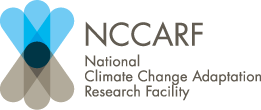You are here
Infrastructure – crossing the next dimension
You may not be aware, but infrastructure is highly interdependent. Utility managers need to understand where these cross-dependencies are and how to deal with them.
For example, if a storm knocks over a bunch of trees it can not only cut off power – crews can’t come out and fix the problem because the road is blocked by trees. A broken power transformer might stop traffic lights, sewage pumps and mobile towers from working, which creates its own set of interconnected problems.
During the Sydney storms in May 2016, a major sewage pumping station lost all power and was getting close to overflowing. It would have been the largest sewage spill event in NSW’s history. There was so much damage to the electricity network that there was no way to divert power to the site. So many roads were flooded or blocked by trees that crews couldn’t bring emergency generators to the site. Fortunately, the spill was narrowly averted, but it highlighted the interdependency of infrastructure.
The Government of NSW, in collaboration with the City of Sydney, Sydney Water and other infrastructure providers, are coming up with an innovative solution to the problem. Titled XDI, for Cross Dependency Initiative, the project will examine all infrastructure in the Sydney basin. It will include water, waste water, electricity supply, airports, ports, telecommunications, roads and rail. Using climate information such as storm surge, heat events and sea-level rise, it will identify specific points of infrastructure failure and calculate how those failures will cascade across the system.
Not only will this approach identify specific hot spots, it will make Sydney more resilient overall. By investing in those single pieces of infrastructure that can bring down the whole system, Sydney will achieve better resilience and reliability, which will benefit everyone. It will also demonstrate the business case as to why it is better for one utility, such as water, to spend money on another utility’s infrastructure, such as electricity. It will show that upgrading electricity assets will provide greater protection for water systems, and why that approach may be a more cost-effective investment for water companies than putting money into their own infrastructure.
More information: www.xdi.systems
What are the climate risks to your infrastructure?
In your community, when has damage to one service caused failures to others?
rb2k5pnh7kkv0p5k.png





